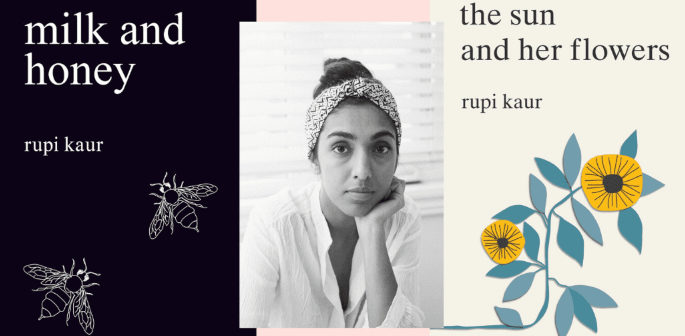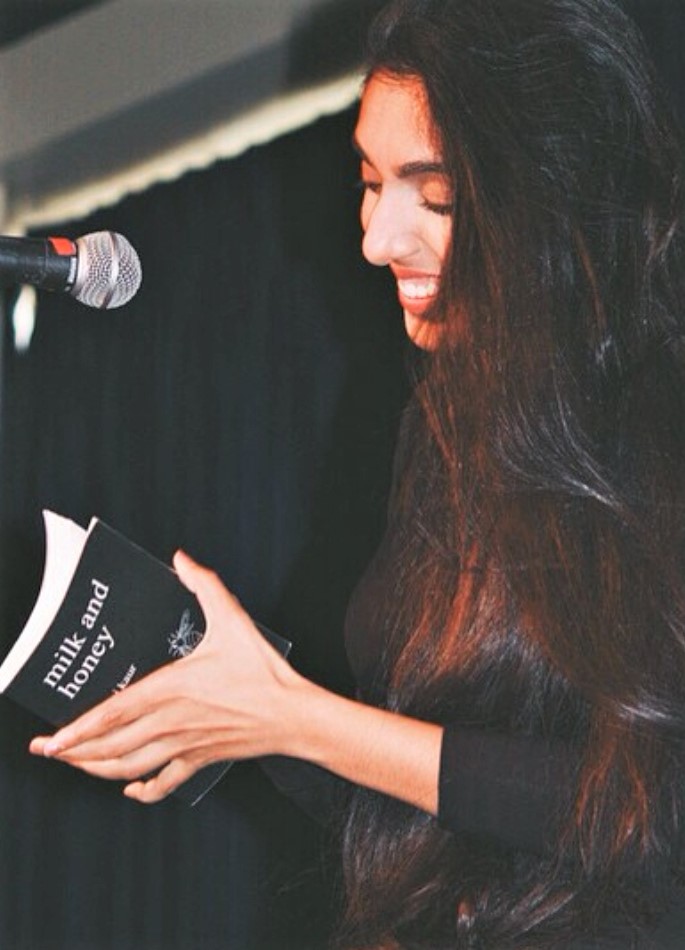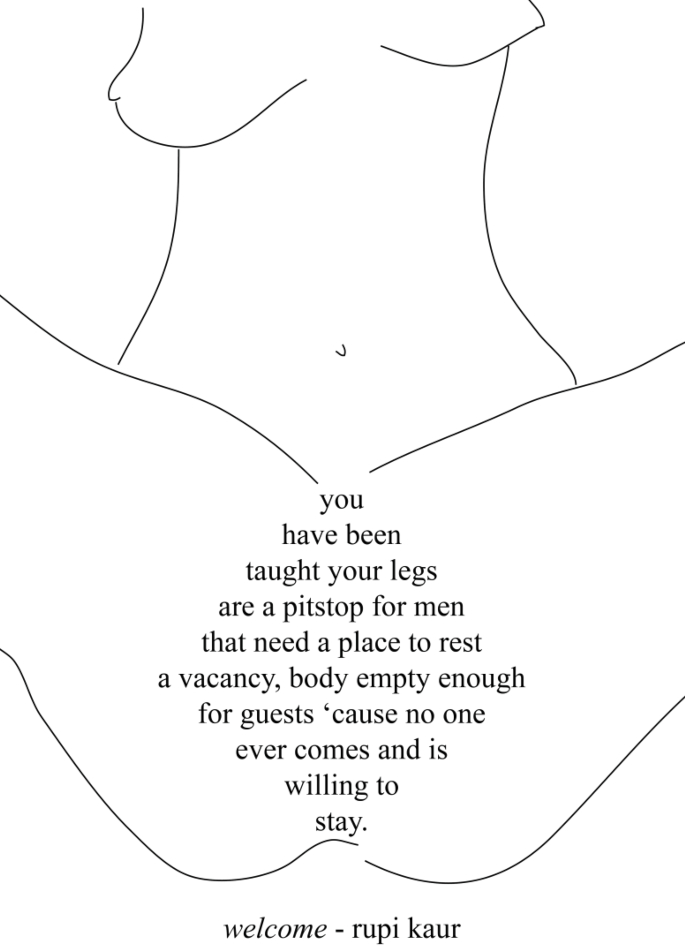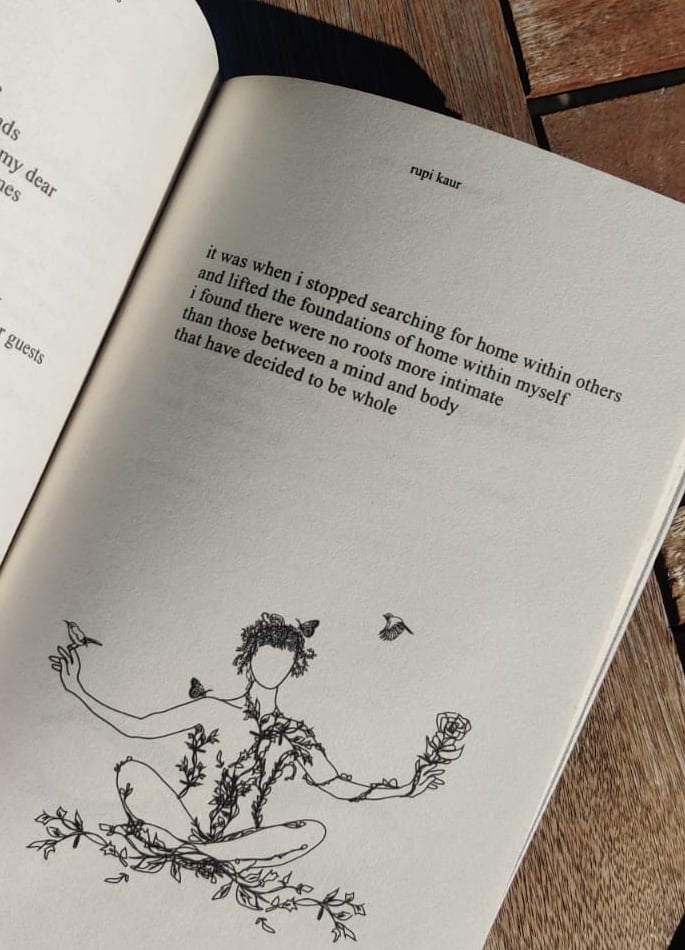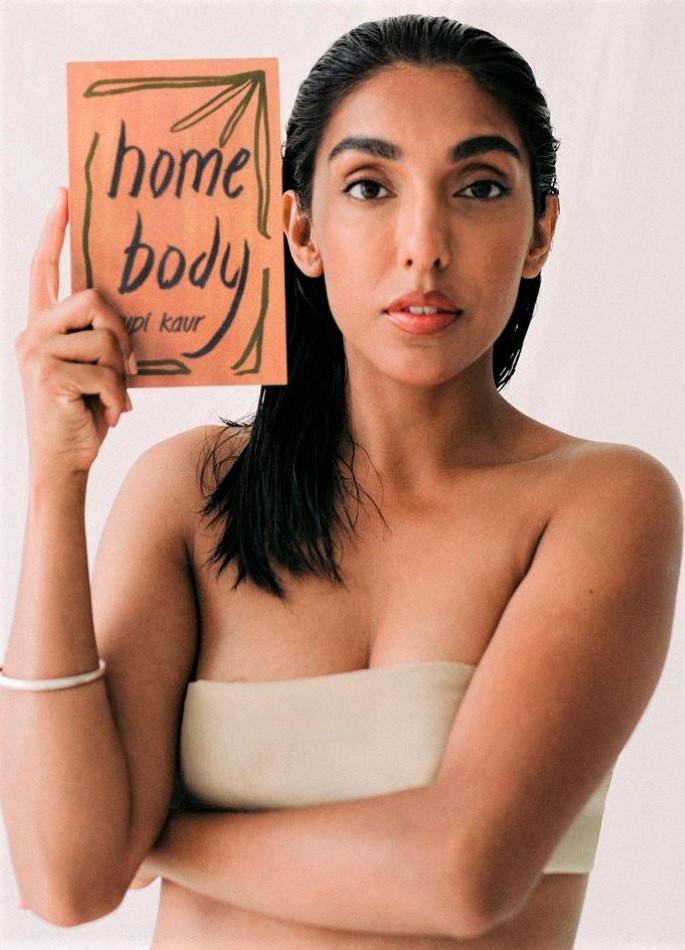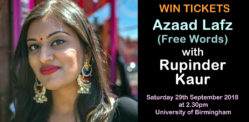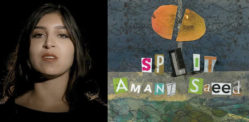"You have been taught your legs are a pit stop for men"
Rupi Kaur is an Indian Canadian poet, who has established herself among the literary world through her simplistic yet raw poetry.
In November 2014, at just 21 years old, Kaur self-published her first book, milk and honey, using CreateSpace.
Kaur was still at university whilst she wrote, edited and illustrated the landmark collection, showing her commitment to her craft.
In October 2017, Kaur’s second collection, the sun and her flowers, was published and translated into over 42 languages.
Her words touch on many themes including love, loss, trauma, healing, femininity, migration, abuse and Sikhism.
In November 2020, Kaur released home body. The collection became a New York Times bestseller, debuting and staying at number one for nine consecutive weeks.
Kaur now boasts over 4 million followers on Instagram and her work is well-recognised by the short, punctuationless lines and sparse drawings.
These features helped her rise to prominence as a poet of social justice and empowerment.
DESIblitz explores her work and how she ties in her own history and heritage through it.
Milk and Honey
The title of Kaur’s first collection was inspired by a poem that she wrote in 2012.
She used the term ‘milk and honey’ as a metaphor to describe the resilience of Sikh widows who survived the Sikh genocide of 1984. This theme of strength is woven throughout the collection.
Readers are taken on a journey of trauma and loss and are later lifted into a place of healing and wholeness.
This contrast between bitter and sweet moments form a picture of the reality of our modern world.
It reminds readers that there is beauty, grief and pleasure all around us.
Design Style
Kaur’s use of a monochrome colour palette is simple yet effective. This simplicity allows the words themselves to stand tall and undistracted.
The black and white colour theme of the book pays homage to her iconic Instagram poems that readers have come to associate with her work.
Most admirably, Kaur designed the book covers and pages herself.
The book cover acts as an extension of the individual poems as the words sit at the top left and illustration on the bottom right.
This makes for a more pleasurable read as the consistency allows for an uninterrupted experience.
Also, the organisation of the poetry collection is meticulous.
The placement allows the reading experience to feel like one continuous journey through different emotions.
This elevates the sense of healing and therapy that echoes throughout the collection.
The Four Chapters
milk and honey is split into four chapters which symbolise the different markers of Kaur’s life:
- ‘The Hurting’ explores trauma, neglect, and objectification.
- ‘The Loving’ analyses the passion ignited by love.
- ‘The Breaking’ focuses on the deep pain of heartbreak.
- ‘The Healing’ promotes resilience, self-love and female empowerment.
The simplistic and organised style make the poems ‘easy reads’. However, there is a shock value in her subject matter and the way she approaches this.
In ‘The Hurting’, the poem “welcome” showcases an illustration of legs spread open with the poem reading:
“You
have been
taught your legs
are a pit stop for men”
The blatant imagery and second-person pronouns capture the reader’s attention.
This strong statement is made about the objectification of women and it is intended to make the reader feel uncomfortable.
Kaur goes on to address more modern topics such as demeaning her ex-boyfriend’s future partners in ‘The Breaking’.
However, she writes later in ‘The Healing’:
“Other women’s bodies
are not our battleground.”
Not only does this highlight the growth of Kaur in her personal life, but allows readers to feel a sense of recovery and rejuvenation.
This character development encourages readers to approach relationships with maturity. Besides, it shows Kaur’s development as a woman herself.
‘milk and honey’ is distinguished by its accessibility, inclusive content and direct approach to tough topics.
Her debut collection explores female experiences with evocative and emotive language.
Not only does this highlight Kaur’s literary skill, but how her poems are a tool for reflection and self-help.
Breaking the Rules
Notably, Kaur’s poems break conventional rules of traditional poetry concerning grammar and punctuation.
Her free-form poems always use lowercase letters and this striking choice honours her mother tongue, Punjabi, more specifically, the Gurmukhi script.
Within the Gurmukhi script, the letters are all lower case and every letter is treated the same. Kaur states:
“I enjoy this simplicity.”
She adds:
“I also feel there is a level of equality this visuality brings to the work.
“A visual representation of what I want to see more of within the world: equallness.”
Nonetheless, it is apparent that there is a thin line between over-simplicity and accessibility in these poems.
On the one hand, it is brilliant that Kaur can navigate gritty topics whilst being inclusive as readers embark on an inward journey.
On the other hand, many readers feel that her poems could be written by anyone.
However, the reason why Kaur has such a stripped-back approach to her work is that it is:
“A visual manifestation and ode to my identity as a diasporic Punjabi Sikh woman.
“It is less about breaking the rules of English (although that’s pretty fun) but more about tying in my own history and heritage within my work.”
One thing is for certain, Kaur has an admirable ability to provide intention behind every aspect.
Whether it is the drawings, words, grammar or punctuation, there has been thought, deliberation and editing before her work is complete.
The Sun and Her Flowers
Rupi Kaur’s second collection, the sun and her flowers, has sold over 8 million copies in multiple languages.
Evidently, Kaur has found literary success in a marketplace dominated by cis-gendered white male writers.
The front cover of the sun and her flowers is brighter compared to milk and honey, as sunflowers grace the centre. As a result, readers question this change.
This botanical floral design symbolises the journey of wilting, falling, rooting, rising and blooming that readers experience within the pages.
Most importantly, readers know from the onset that this will be a different journey.
Unlike the rigid design elements of milk and honey, colour has burst onto this book cover.
The bees from ‘milk and honey’ have now pollinated, leaving behind a field of lush colour and vibrancy.
The use of colour foreshadows the celebration of love in all forms that she writes about.
the sun and her flowers is a play on the word ‘sunflowers’.
Sunflowers are famous for following the sun. When the sun rises, their heads also rise. When the sun sets, they bow their heads, anticipating the suns return.
It is a recipe for life. Like flowers, people must also wilt, fall, root and rise in order to bloom beautifully in the sunlight.
These attributes form the five chapters: wilting, falling, rooting, rising and blooming.
Kaur ran the risk of readers and critics questioning her ability to grow as a poet because she continued with her fluid and plain style.
Key Themes
Upon close analysis, the sun and her flowers evoke issues such as infanticide and racial diaspora.
With this collection, Kaur marks her reputation as a poet of social justice.
The style of her second collection combines short poems of a few lines with longer narratives.
It recounts issues like the beauty found in her parents’ broken English and self-reclamation after sexual abuse.
The poems, like her debut collection, often lack titles and distinctive boundaries between each work.
The pervading distress of lost love and the struggle of waking up in bed alone are key themes in the first chapter ‘wilting’. However, Kaur excels in affirming the importance of self-love.
The empowerment she offers to readers is inspiring.
In particular, the poem “what love looks like” refuses to digress into a pool of self-pitying, and instead she candidly writes:
“i think love starts here
everything else is just desire and projection.”
Kaur emphasises the unhealthy obsession many have with romantic affection alone. She remains adamant about displaying love as an act of giving.
Disturbingly contradictory passages such as ‘what draws you to her/tell me what you like/so I can practice’ blatantly exposes Kaur’s self-flagellating psyche.
She explores the toxicity within relationships to which many fall victim .
For instance, what is refreshing is the defiant refusal to find validation in a lover’s approval. Kaur does not buy into the desire to be someone other than yourself.
Other themes within the collection are surrounded by death and one of Kaur’s personal favourites reads:
“i am of the earth
and to the earth I shall return once more
life and death are old friends
I am the conversation between them.”
Reframing death in a less terrifying way feels unique, calming and authentic.
Entering a Political Sphere
Kaur elevates her writing into a political sphere as she addresses the implications of immigration and race.
The warmth of her words promotes South Asian pride. Although, she still highlights the problems that need acknowledging from those within the community.
Mainly in the chapter ‘rooting’, Kaur creates a commentary on racial issues of South Asians. Instead of homogenising the experiences of immigrants as a collective, she focuses on individuals.
Furthermore, she touches on the nostalgia felt by her mother who longs for her native Punjab. The search continues ‘in foreign films/and the international food aisles’.
Likewise, she shows fierce pride for her race when she states:
“it is a blessing
to be the colour of the earth.”
As an Indian Canadian, Kaur integrates representation through her poetry. It is a brave and honest collection that dismantles taboo topics and fights against oppression.
Home Body
Rupi Kaur’s anticipated third collection home body has four chapters: ‘mind’, ‘heart’, ‘rest’ and ‘awake’.
Published in November 2020, self-love, mental health and acceptance are central to this book. The way Kaur’s words shake the soul of readers is commendable.
Unlike her first two, this book feels more of a jumbled mix of authentic, raw emotion combined with cliché metaphors.
Yet, there are many positives. On page 144, Kaur writes:
“i am complete simply because I am imperfect.”
This is in keeping with Kaur’s empowering and feminist style.
Also, in home body, Kaur embraces change, a notion that is certainly prevalent with Covid-19.
Her healing words are perfectly timed with the suffering felt from the coronavirus pandemic. The raw accounts of struggle with mental health, work and love are comforting.
On releasing this book during a pandemic, Kaur says:
“I’m excited to share this new collection with the world.
“We can’t make it anywhere alone. We need each other. Together, a better world is possible.”
The poems in this collection remain malleable and easily applied to almost anyone from any background.
Mental Health
Kaur’s words on love, acceptance and community allude to the mental health aspect of this collection.
The untitled poem on page 136 reads:
“what a relief
to discover that
the aches I thought
were mine alone
are also felt by
so many others.”
Talking about mental health is crucial and Kaur understands this well with the undertone of depression within her work.
Kaur encourages readers to open up about their own struggles because the ironic part of loneliness is that it is collectively felt.
Much of the chapter ‘rest’ discusses her own struggle to produce a third book and be productive.
Kaur shows that she feels pressure to produce content at her own artistic expense. However, she ends on a positive note which suggests she has risen above that.
Poetically, home body continues to liberate itself from the archaic regulated metre and allows itself to just be, echoing Kaur’s other collections.
Additionally, Kaur seeks to entwine her history and heritage within her work and it is clear she has been successful doing so.
Nuri Bhuiyan from The Harvard Crimson wrote that Kaur:
“Scatters bite-sized images and pieces of language that act like rafts for the reader.
“Providing a way out of negative rabbit holes and into portals to self-love, community, and justice.”
Nevertheless, whether a reader adores or disapproves of her unconventional style, her poems have managed to impact readers worldwide.
Her inclusion of culture, taboo, self-love, growth and more showcase the level of familiarity Kaur has with herself and her surroundings.
Her unique storytelling is open to different interpretations. Hence, Kaur’s work can be read at face value or be used as a self-help tool, but the comfort of her tone resonates throughout her poems.



















































